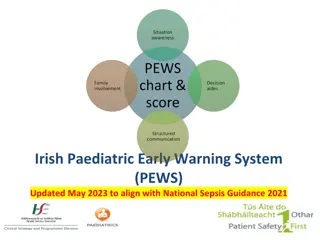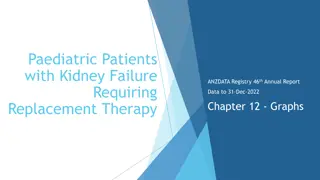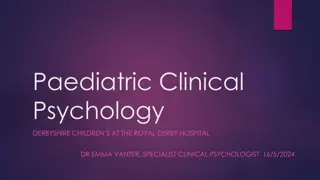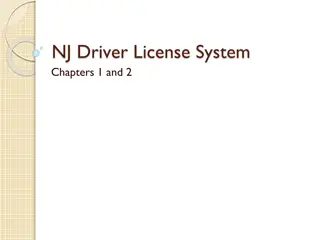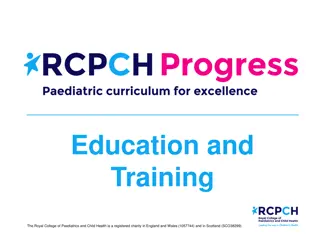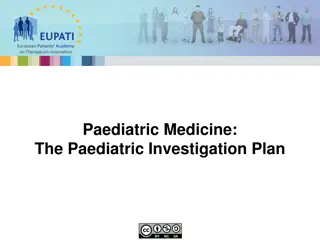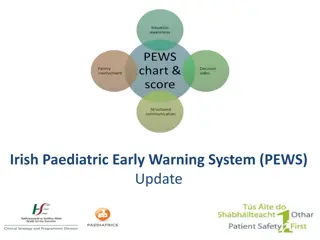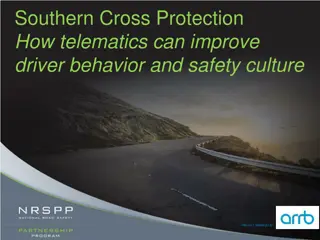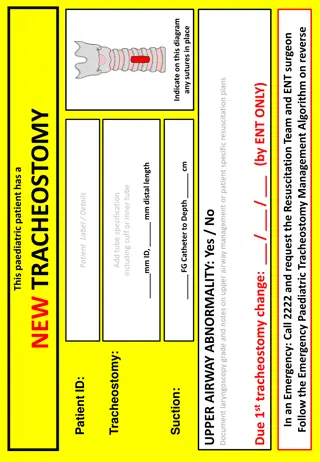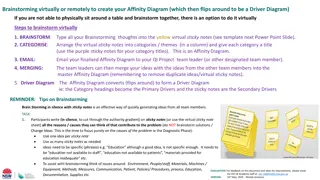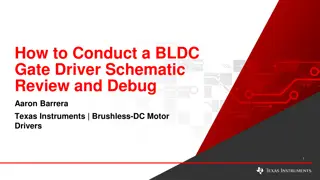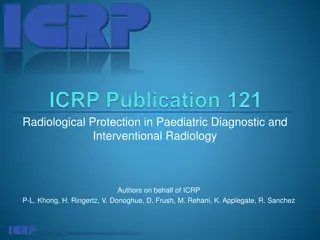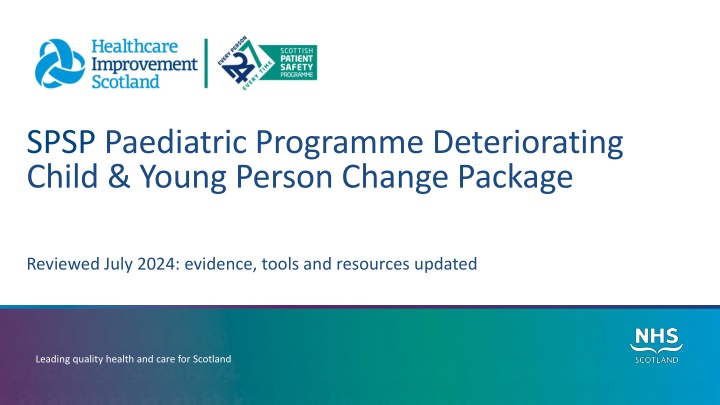
Improving Care for Deteriorating Children and Young Persons
Explore the updated tools and resources for the SPSP Paediatric Programme focusing on recognizing, responding to, and reviewing deteriorating children and young persons. Enhance person-centered care planning, communication, and staff well-being to reduce harm. Embrace principles of trauma-informed practice and utilize standard tools to include the voice of the child in care decisions.
Download Presentation

Please find below an Image/Link to download the presentation.
The content on the website is provided AS IS for your information and personal use only. It may not be sold, licensed, or shared on other websites without obtaining consent from the author. If you encounter any issues during the download, it is possible that the publisher has removed the file from their server.
You are allowed to download the files provided on this website for personal or commercial use, subject to the condition that they are used lawfully. All files are the property of their respective owners.
The content on the website is provided AS IS for your information and personal use only. It may not be sold, licensed, or shared on other websites without obtaining consent from the author.
E N D
Presentation Transcript
SPSP Paediatric Programme Deteriorating Child & Young Person Change Package Reviewed July 2024: evidence, tools and resources updated Leading quality health and care for Scotland
Core programme measures Use of correct age-related PEWS chart** Reliable use of PEWS observations** To reduce harm from deterioration by improving the recognition, response and review of the deteriorating child and young person Reliable scoring of PEWS** Reliable response to children and young people who trigger PEWS** Locally agreed measures should include: **This data is already collected as part of an existing Excellence in Care measure
2023 Deteriorating Child & Young Person Driver Diagram Which requires We need to ensure What are we trying to achieve Patients, families and carers are listened to and included Person-centred care planning Person-centred care* To reduce harm from deterioration by improving the recognition, response and review of the deteriorating child and young person** Anticipatory care planning & CYPADM Discussions with families are well managed Observations using PEWS (Scotland) Action on staff concern Action on patient, family and carer concern Recognition of acute deterioration Timely review by appropriate decision maker Assessment for causes of acute deterioration Escalation Regular review and assessment Standardised, structured response and review By [locally agreed %] by 31st March 2025 Interdisciplinary teamwork and collaboration* Safe communication across care pathways* Use of standardised communication tools* Effective communication in different situations* Psychological safety for staff* Staff wellbeing* Safe Staffing* System for learning* *Essentials of Safe Care **Measurements may include existing Excellence in Care data Leadership to support a culture of safety at all levels*
Primary Driver Person-centred care Secondary drivers Change ideas Principles of Trauma Informed Practice included in local education programmes Use of standardised tools to include the voice of the child/young person Access to tools, resources and education to support compassionate care Patient, families and carers are listened to and included Use of what matters to me? Use of patient passports Use of specialist resources to support care-experienced young people Local mechanism to discuss environmental needs of the child/young person Local method for documenting unique physiological baseline Person-centred care planning Use of tools for anticipatory care planning e.g. ReSPECT, CHAS CYPADM and anticipatory care plans discussed in huddles and handovers Use of tools & resources for setting and reviewing goals & treatment plans Anticipatory care planning & CYPADM Local process to help families identify key clinicians Identified area to hold sensitive conversations Discussions with families are well managed Access to tools and resources to support difficult conversations 4
Primary Driver Recognition of acute deterioration Secondary drivers Change ideas Consideration of digital P EWS or E-Obs Locally agreed education & training for PEWS Observations using PEWS (Scotland) Reliable use of PEWS Locally agreed escalation process that considers clinical judgment as well as PEWS Clear, structured system for families to escalate concerns Action on staff concern Use of tools for children/young people with communication difficulties Discussions with families enable them to recognise and report deterioration Action on patient, family and carer concern Clear, structured system for families to escalate concerns
Primary Driver Standardised, structured response & review Secondary drivers Change ideas Education programmes to include trigger, escalation and response process Use of standardised structured ward rounds Use of locally agreed watchers bundle Locally agreed process for timely review Timely review by appropriate decision maker Use of evidence- based tools e.g. Sepsis 6 Assessment for causes of acute deterioration Use of hospital huddles to escalate care Use of existing evidence based guidelines e.g. bronchiolitis Locally agreed process for escalation Admission information includes how to use call system effectively Escalation Local escalation process includes follow-up clinical review Regular review and assessment
Primary Driver Safe communication across care pathways Change ideas Secondary drivers Interdisciplinary teamwork and collaboration Locally agreed system of communication between teams Use of hospital huddles to improve situational awareness Scotstar watchers bundle Use of MDT shared documentation Use of standardised communication tools SBAR tool Effective communication in different situations Procedures in place for communication between centres MDT ward/unit safety huddles & briefs Mid-shift check ins
Primary Driver Leadership to support a culture of safety Secondary drivers Change ideas Create forums to allow workforce to generate improvement ideas Local mentoring system Psychological safety for staff Visible supportive leadership Use of standardised feedback tools e.g. iMatter Access to mental health first aiders Hot and cold debriefs Use of what matters to me Access to Peer Support Celebrate success Staff wellbeing Staff education & awareness about safe staffing act (2019) Mechanism to identify staff operating out with their usual area Effective rostering Real-time staff risk assessment Clinical supervision Safe Staffing Local system to learn from adverse events e.g. M&M, SAER s, Child Death Reviews Use of tools and resources to support patient safety e.g. NES Safety Culture Cards Involvement of resuscitation teams in improvement work Local system for learning and support for complaints e.g. care opinion Create Use of simulation training opportunities to learn from excellence System for learning
Primary Driver Leadership to support a culture of safety Secondary drivers Change ideas Create forums to allow workforce to generate improvement ideas Local mentoring system Psychological safety for staff Visible supportive leadership Use of standardised feedback tools e.g. iMatter Access to mental health first aiders Hot and cold debriefs Use of what matters to me Access to Peer Support Celebrate success Staff wellbeing Staff education & awareness about safe staffing act (2019) Mechanism to identify staff operating out with their usual area Effective rostering Real-time staff risk assessment Clinical supervision Safe Staffing Local system to learn from adverse events e.g. M&M, SAER s, Child Death Reviews Use of tools and resources to support patient safety e.g. NES Safety Culture Cards Involvement of resuscitation teams in improvement work Local system for learning and support for complaints e.g. care opinion Create Use of simulation training opportunities to learn from excellence System for learning
Contact details Contact us at his.spsppp@nhs.scot Subscribe to the SPSP Paediatric mailing list Visit the SPSP Paediatric Programme website Glasgow Office Delta House 50 West Nile Street Glasgow G1 2NP 0141 225 6999 Edinburgh Office Gyle Square 1 South Gyle Crescent Edinburgh EH12 9EB 0131 623 4300 Visit the Essentials of Safe Care website Leading quality health and care for Scotland



